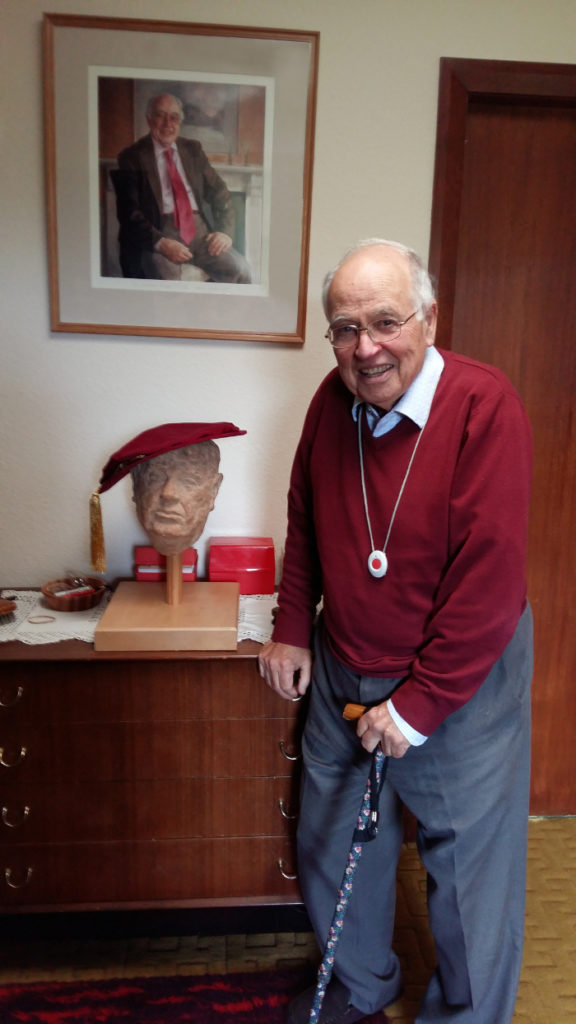
Sir Michael Atiyah is a distinguished mathematician with a stellar scientific career spanning more than 60 years. He is a recipient of the Fields Medal in 1966 and the Abel Prize in 2004, and is best known for his work with I.M. Singer on the Atiyah–Singer index theorem.
In October 2016, Atiyah spoke to C.S. Aravinda, the chief editor of Bhāvanā, at his home in Edinburgh.
Atiyah: I am delighted to meet you. Which part of India are you from?
I am from Bangalore, which is in the southern part of India.
Atiyah: I have visited Bangalore several times. In fact, I have even planted a tree in Bangalore. There was a chap there at the Raman Research Institute who was a friend of mine, called S. [Sivaramakrishna] Chandrasekhar—not the astronomer; he worked on liquid crystals. He said he was also a nephew of C.V. Raman. They are all related.
Many years ago I was reading a paper of C.V. Raman. I think I was most impressed by a statement saying something like, “It is from my collection of diamonds, I have discovered the following facts.” [Laughs] Do you know [other] scientists who say “I have diamonds”? He was a rich man and had a big diamond collection.
Harish-Chandra
You also have other Indian connections. I noticed that, in 1966, the year you were awarded the Fields Medal, the Indian mathematician Harish-Chandra gave a plenary talk at that conference.
Atiyah: Yes, he gave a plenary talk there. When I was a graduate student in Cambridge, I went to Amsterdam in 1954 and he gave a plenary address there too. I remember a very clear impression that I had, which was that he spoke English much faster than any Englishman. In English you have ups and downs. But he was like a machine gun, he spoke much faster. He spoke beautiful English. Of course I couldn’t understand anything. It was not the English I could not understand. I was a graduate student and he was professor or something and he was talking about advanced work. I was just finishing my Ph.D.
You were finishing your Ph.D. at that time?
Atiyah: I finished my Ph.D. in 1955. But I was just beginning my career, and he was several years older than me. He was smartly dressed. Yes, I remember very clearly that first meeting. Of course, later on we met as colleagues. I visited Princeton, but then he was in Columbia at the time.
I think you visited Princeton in 1955–56. But he visited Princeton again in 1956–57, a year after you left.
Atiyah: Actually, I was still there for the Fall term in 1956. Of course he became professor later on. I went to Princeton for seminars. I was certainly there in… oh dear… [laughs]
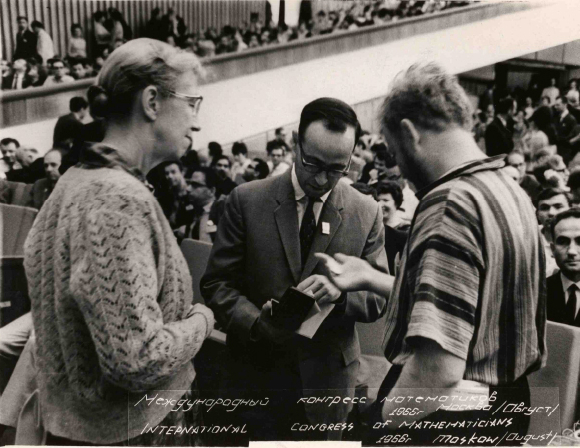
I think you went there sometime in 1969. Because Nigel Hitchin mentions in some place that soon after he finished his Ph.D. he went with you to Princeton.
Atiyah: He came as my assistant. That was a good time. Anyway, later on there was another Indian who came to work with me—Patodi.
Vijay Kumar Patodi, yes. I was going to ask you about him too.
Atiyah: Very brilliant man. And a very sad case. He died almost at the same age as Ramanujan.
Around the same age, in his early 30s, yes. He died of renal failure.
Atiyah: His case was more complicated. Anyway, at that time my interests were not very close to Harish-Chandra’s. My interests became closer much later, possibly after he died. When did he die?
He died in 1983, at the stroke of his 60th birthday.
Atiyah: I know that; he was going to have an operation but he couldn’t have it. So we didn’t really interact much. But I got interested in that kind of mathematics probably after he died, 30 years ago.
I have read somewhere that he was going to give a talk somewhere in England, I don’t remember where. And then he had a heart attack and cancelled his visit.
Atiyah: Yes, in 1982. At that time, I was back in Oxford. There, I had a succession of Indian visitors who came to work with me, mainly from Bombay who were students of M.S. Narasimhan. A whole succession of them. I got to know S. Ramanan very well, a very nice man. T.R. Ramadas came a little later. They all came to work with me in Oxford in that period. Yeah, it was quite a strong Indian connection. Long time ago.
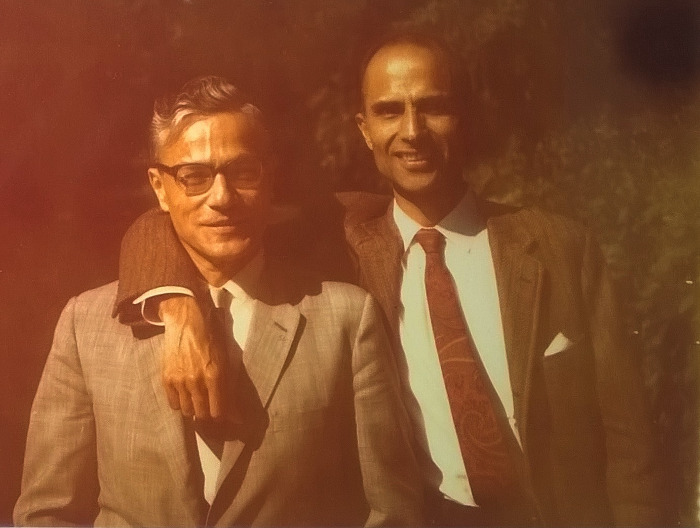
So you first heard Harish-Chandra at that Amsterdam conference in 1954. When you were at the IAS [Institute for Advanced Study] Princeton later, was there any interaction?
Atiyah: I was at IAS as faculty from 1969 to 1972, and Harish-Chandra was already there. We were only about eight or nine colleagues and we had to meet to discuss things. I got to know him from close. We got to know each other’s families, as we all lived quite close together. For instance, their daughter Premi married Pierce who was a fellow at Trinity College, Cambridge.
But we didn’t really overlap much mathematically. Our mathematical interests were a bit different. But I got to know him well. Both he and his wife were very tall and upright. They were imposing Indians you know, and I was short, but they were nice to us. They lived on Battle Road. I also knew Armand Borel very well, and he was very friendly with them. I think Harish-Chandra came from Allahabad and not from Bombay. Originally, he was a physicist.
Correct, he did his Ph.D. with Paul Dirac.
Atiyah: You know this story about Harish-Chandra and Freeman Dyson?
Yes, I know, but please relate it.
Atiyah: I think it’s a more or less true story. Harish-Chandra and Dyson were both graduate students in Cambridge after the war. Harish-Chandra was doing physics with Dirac and Dyson was doing number theory. While they were walking down the streets, the story is that Harish-Chandra tells Dyson “Physics is in a mess and I am going into mathematics” and Dyson said to him “Physics is in a mess, and that’s why I am going to go into physics.” And they switched over.
Of course, Dyson still kept an interest in mathematics. Harish-Chandra used his knowledge of physics to direct his mathematics. He worked on infinite-dimensional representations because of the work of the Russian school led by Israel Gelfand. Harish-Chandra wanted to do it more rigorously.
So Harish-Chandra and Dyson had this very odd connection. I got to know both of them. I knew Dyson very well too; he is still very much around and must be about 90 now.
Both Harish-Chandra and Dyson were born in the same year, 1923, and so Dyson must be about 93 now.
Atiyah: Exactly. More recently, at the Royal Society in London, as a tradition, if you have been a Fellow for 50 years, they give you a nice little dinner for which you could invite your friends. To succeed in this, you have to be a mathematician or physicist, you have to be elected very young and you have to get very old. So not many people have qualified [laughs].
Right!
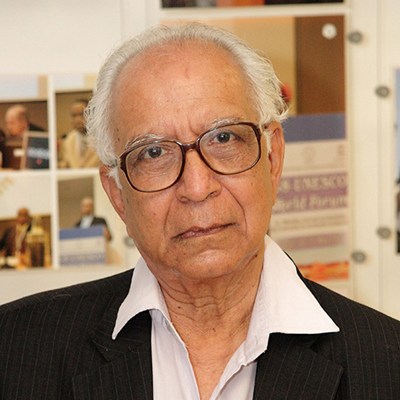
Atiyah: When I was President of the Royal Society, one person did qualify, and that was Rudolf Peierls. He was involved with the atomic bomb. I had to preside at his dinner, and we had Hans Bethe as his guest. After I left the Royal Society, when I was getting to my fifty years [as a Fellow], I wrote to the Royal Society, more or less saying “I hope you haven’t forgotten that there is a tradition.” And they wrote to me saying “Oh, we’ve forgotten all about it. For the last ten years, we haven’t had any. Oh dear, what are we going to do?” [Laughs] So they said “Ah, we’ll invite everybody who were elected in that ten year period.” Only two people came—Dyson and me. I was elected for fifty years, and he was elected for sixty years. None of the guys in between were able to come, so it was rather funny. I have slight disagreements with Freeman Dyson, but he is a strong minded person with strong views.
Harish-Chandra and Dyson were both six years older than me. So when I went as a graduate student to Amsterdam, I was 25 and Harish-Chandra was 31. In terms of age, the difference was only six years, but in mathematical terms it is the difference between a post-graduate and a senior professor.
IAS, Princeton
You came back to the UK from IAS in 1972. What led you to come back?
Atiyah: Well, when you make a decision, first of all, you don’t know why you’re making it! [Laughs]
There can be many different causes. Even if you can easily list the causes rationally, the decision is usually an emotional one. And you don’t admit it. I can talk for hours but there are a few factors. One is we had been in America for years and my wife was not very happy. She had a better job in this country [UK] than she had there. Also, we used to spend half the time there and half the time back here which was not very good for her because she could not get a job properly. Plus my children were growing up—the eldest one was 16 and if we stayed for a few more years he would have gone to college in America and then we would never be able to leave. So, it was now or never. And thirdly, I was at the Institute when it was an unhappy time between the director—at that time it was Carl Kaysen—and the faculty, particularly the mathematicians including André Weil. I was caught in between and I felt very unhappy. It was a difficult decision, as I liked the Institute and it suited me very well mathematically. But I felt that I was being selfish in putting myself first. My family comes first. A job turned out for me here and I came back. It worked out very well and I got lots of brilliant students. It was really a toss of a coin, and my heart made the decision. It was not rational. Sometimes your heart makes a better decision. [Laughs]
Yes, I think so too. As you said, when your heart makes the decision, there is no reason why.
Atiyah: Precisely. It is very complicated. It’s an emotional response which has many factors.
I have been to the IAS as a visitor, young man, older man and I’ve known all the people and all the directors very well. It is a funny place. It can be marvelous and vibrant for the right person at the right time. Its most useful function is that it is a place where young people go for postdoctoral work. The school of mathematics was a big one, and a large number of post-graduate people came there either for postdoctoral work or on their first sabbaticals. They were all very young and active and some of them, having been in the army, were delayed by five years. It [this stage in one’s research career] is a very formative period. Everybody is full of ideas. They go to seminars at the university, at the Institute, and the faculty on the whole have very little contact, with a few exceptions.
The Princeton University is also close by…
Atiyah: Of course; the university is fine but the Institute was meant to be separate, you see. And some people were very separate—they didn’t come in at all, they didn’t mix with students. Sometimes, each person would select assistants who were more or less right-hand men. Otherwise, all of them were selected by competition and some faculty would attract more students and used to work with them—and some did not. But it depended mainly on personalities, and in some cases the areas of interests. As a young visitor, I hardly knew the professors. Although, through one or two lectures, I got to know some of them like Dean Montgomery quite well.
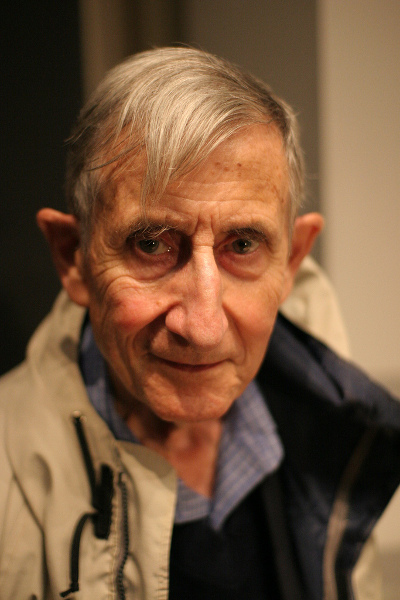
Was Atle Selberg also there at that time?
Atiyah: Yes, he was there but he didn’t interact very much. I wasn’t doing number theory very much. We didn’t interact with all the famous people at all. On the other hand, they were the people—the flagships—that brought the money in that would enable the young people to come. So they were kind of the umbrella. But the interaction between the postdocs and the faculty was very small. Some people interacted quite a lot. For instance, Borel interacted quite a lot because of his wide interests.
He used come to India quite often because he loved Indian music.
Atiyah: When I first went to IAS, he wasn’t there. He came later.
All the faculty at IAS were very clever people obviously, but sometimes there were odd and unusual personalities who didn’t get on with the other faculty or the students, or had some kind of problems. There was Selberg and Arne Beurling and they worked on their own to a great extent. They were Scandinavians—they didn’t have much contact with others. There was Marston Morse. He was retired but he was still active when I was there. He had a few acolytes, I would say. And Hermann Weyl was there before I arrived. He was a marvellous guy. He was a really great man, especially with young people. The physicists were even younger and more active. All the mathematicians were slightly odd—not meaning they were bad but they were unusual. Some of them had one or two people—assistants—in little groups who were in their area. It was a very odd situation. Everyone wanted to go to IAS because there were famous people.
Another person who was there was Kurt Gödel. I had heard the name a little bit. He was a very odd person, extremely odd. He eventually died of malnutrition.
I see.
Atiyah: Gödel was the greatest logician of the 20th century. For a long time at the Institute he wasn’t even a full professor. He was only a sort of a half professor. And then he had paranoid ideas. He thought that people were out to poison him. After his wife died, he starved to death. He just didn’t feed himself; he was really an extreme case. I knew him before that. So if somebody had serious psychological problems, the Institute was not a good place to be. There was too much pressure.
John von Neumann was an enormous personality. Both Hermann Weyl and Einstein had died before I came. Their reputation still lives on. Princeton was the place which had all these names—Einstein, Weyl, von Neumann—who were great figures at the time. So you could chat with great mathematicians and physicists.
I looked through the Institute records for a while when I was there. There was this talk by George Dyson, Freeman Dyson’s son. He had an odd history—he ran away from school, lived in a treehouse. Then he came back and became an author. He spent a year at the Institute officially at the invitation of the director, accessed all the archives, gave talks. He was supposed to be writing a book. The title of the book was Turing’s Cathedral. It is about the history of computing.
The one thing that I missed when I was at IAS—I didn’t have graduate students
A fairly recent book, yes.
Atiyah: It is really about von Neumann but he thought Alan Turing’s name would attract more people. So it’s called Turing’s Cathedral. Interesting book. I spoke to him when he was there, and he told me stories such as, for example, that the Institute tried very hard to get Paul Dirac. They tried very hard to get Turing to stay; he had been working with von Neumann. But he didn’t want to stay. So there were a lot of successes and failures. There were some people, like Carl Ludwig Siegel, who went back to Germany after the war (1951). So they attracted people but sometimes they lost them. But they tried very hard to get all the top people. They paid big salaries but still some people had good reasons not to go, all sorts of personal reasons.
As you said, sometimes it is a decision of the heart. Secondly, certain places suit certain personalities, I guess.
Atiyah: Of course. If you wanted peace and quiet at the Institute, and you wanted to get on with your work with one or two people to talk to, had a good and stable enough family life, you liked the country, then it was a marvellous place. So many of these things were good. But I had my family worries about other problems, and eventually I left. The one thing that I missed when I was there—I didn’t have graduate students. I had one or two graduate students who were unofficial, a few of them who were my assistants, and did their Ph.D.s at the university. When I came back to Oxford, I got a flood of good graduate students. All very brilliant. I was very fortunate.
Yes, you have large number of them.
Atiyah: Yes! Simon Donaldson was my student. Graeme Segal was my student. And Patodi being a sort of a student. I liked having young people with me. It worked out very well. I came back just at the time when I was well known enough that people would come to work with me.
V.K. Patodi
Since you mentioned Patodi: Perhaps you came to know about Patodi through his paper? Or was it when he was in Princeton visiting IAS?
Atiyah: I think I got to know him as a student of Narasimhan. What Patodi did was that he gave some very clever proofs of some difficult theorems in differential geometry. He developed his own formalism which I couldn’t understand. Raoul Bott couldn’t understand it. We knew the results were interesting. So then, through Narasimhan, we invited him to come, and he spent two years at the Institute in Princeton. Bott, he and I worked very closely together and we understood what he was doing.
Interestingly enough, subsequently when the work we were doing got to physicists, the physicists rediscovered what Patodi had been doing in the language of super-symmetries. But we were there first. They gave, subsequently, physicists’ proofs of what Singer and I were doing, but Patodi did it first. I don’t think they really gave him proper credit. He did it, he found it all by his hand. He was a bit like Ramanujan.
Yes, you mention that in your preface to the collected works of Patodi.1
Atiyah: He had a kind of intuitive feel for formulas and he couldn’t explain how he got them. And he was very clever. We struggled very hard to understand them. And through that we learnt from him and we published papers. He had very good insight.
But you see, like Ramanujan, he had extremely rigid habits of eating. He was a Jain. He had to go wash his hands before doing anything. He had to cook his own food. When Ramanujan came to England, he was somewhat similar. He was very fussy about the food. He was cooking on his own and he actually had malnutrition. He couldn’t get the vegetables that he needed.
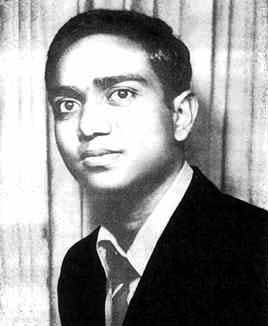
And there was also the war at that time.
Atiyah: Of course that didn’t help him any.
In Patodi’s case, it may have been even more rigid, because observant Jains eat before dark.
Atiyah: Exactly. Very rigid. He also had a lot of serious illnesses, which he didn’t take seriously enough. He discovered he had kidney failure and also tuberculosis.
I see. I didn’t know he had tuberculosis.
Atiyah: I think so. But he certainly had more than kidney failure. When I got back to Oxford, we heard from people in India that he had kidney failure, which is a serious illness, and he needed a kidney transplant which costs a lot of money. I contacted a friend of mine who was a surgeon and an expert at [treating] kidney and asked him if he would consider helping. And I said well, it costs a lot of money and I and my friends will try to get some money together to pay for it. He said he wanted to see his medical papers, so we arranged for it to be sent to him. And when he got them he told me that it was much more serious than I thought. He had kidney failure but also lots of other problems as well. This meant it would be a very delicate operation. I then found out that it wasn’t just kidney failure but that there was something more, so his case was very difficult. Still we were discussing whether we should bring him to Oxford and have the operation done. But then we heard that there was an American expert who was visiting India who would consider doing the case. Then the expert went there but I think Patodi died while under anaesthetic before the operation.
He died tragically before the operation could be made because his system was so weak. He died at the age of 31. He wasn’t quite in the same league as Ramanujan but he was very good. So there are lot of similarities. Ramanujan went to Cambridge to work with Hardy. Patodi came to Princeton to work with Bott and me. We wrote a lot of papers together. I learnt a lot from him, his intuition. He learnt something from us. So here was a very parallel story. Ramanujan was probably ahead. But nevertheless, it was a lot of similarity. I’m very happy to see that Patodi’s name is accorded and recognized now. Unlike with Hardy and Ramanujan, he was a very emotional part of my own life. I had got myself tied up because he was such a nice man. I think he was an easier person. Ramanujan I think, was a difficult person. Patodi was a very easy person, very nice person—a really modest person; and you don’t find really modest people in the world—and we didn’t have any problems. But his medical problems were more serious and he had these very strict food regimen.
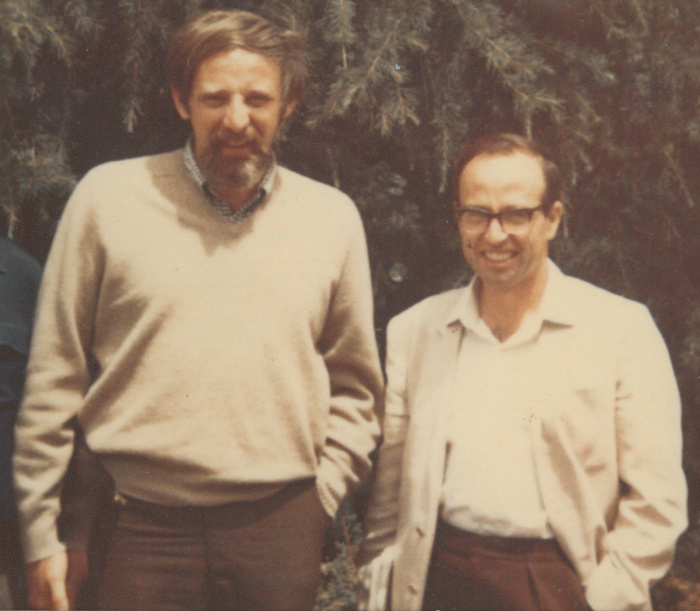
I don’t know if Patodi came with his wife.
Atiyah: Hang on. Was he married?
Yes. His wife’s name is Pushpa Patodi. Maybe he married after he went back to India.
Atiyah: He came as a young man, you see. When he came to work with me he had just done his Ph.D. with Narasimhan. So he was probably only in his middle twenties. I don’t think I remember his wife. He invited us for dinner to his house once or twice and he did the cooking. You know this story of Ramanujan is somewhat similar but Ramanujan invited his guests and walked out halfway through the dinner only because the guests didn’t have a third helping.
When you talk about Raoul Bott, what I must definitely recall is that you wrote an obituary of his in Bulletin of the LMS,2 which I felt was very warm and had a lot of personal touch.
Atiyah: I put my heart into it. He died in 2005. He and I both got very friendly with Patodi. We had lunches with him, and he used to cook us a meal. But we learnt how fastidious he had to be about his food.
He was a vegetarian too.
Atiyah: Yes, that’s okay—you can be a vegetarian and eat a lot. First time when I went to Mumbai, I was looked after by K. Chandrasekharan. He was a vegetarian. He invited us for dinner and gave us a most enormous meal to show us that vegetarians could eat very well and in large quantities! [Laughs]
So you think he would have, potentially, gone on to do very well.
Atiyah: Yes. Because he had a lot of insights and by the time we finished working together he had learnt a lot more things. He would have gone on to be a very famous mathematician.
I was asking specially because you mentioned that later on physicists did the same thing.
Patodi gave some very clever proofs of some difficult theorems in differential geometry
Atiyah: Yes, he would have been able to fill that gap. There were not a lot of people in that area. He might have been in any country in the world. But probably because of his Indian connection, that he was a Jain, he would have stayed in India. There are a lot of people now as it is very popular. There is this physicist called Ashoke Sen—he is up there, right? So there are now enough Indians who have gone back. After all it is 30 years now since that time, things have changed.
The advantage of living longer is that you get this panoramic view. And you see things in different periods and in different times, the influences of people and you will realize that what you read in the history books is not the true story. True stories are much more complicated with who influenced whom and how, and usually the history books are wrong [laughs]. You know, they are always wrong. The further away you go the more wrong they are.
It becomes speculation.
Atiyah: You know it’s a bit like ordinary history. I am also interested in history. They say that history is written by the winners. And then of course people do research—they go back and say “Ah, this is all wrong. He wasn’t the villain, this was the guy who was the villain!” England history is full of it.
Mathematics is a subject where the establishment rules. People in positions of power can influence somebody’s career. It can be for the bad. And people don’t discover this for a long time, sometimes for hundreds of years.
Education
When you were growing up here, you were of an impressionable age when the war broke out in Europe.
Atiyah: Yes, but I wasn’t in Europe. I was in the Middle East.
Mathematics is a subject where the establishment rules. People in positions of power can influence somebody’s career
Did the war affect you in any way?
Atiyah: Well, probably. My mother was from this country and my father was Lebanese. He worked in Khartoum in Sudan, which is at the junction of the White Nile and the Blue Nile. His family was in Lebanon, and my uncle worked in Palestine at the time. We went to secondary school in Cairo and in Alexandria.
When the war broke out we were in England on holiday. My father had to go back immediately, leaving my mother and children in England. We then followed across through France, just before France collapsed, and got to the Middle East. We spent the war entirely in the Middle East. After the war my father retired and came back to England.
Did it affect you academically?
Atiyah: Well, when I was young I went to this small school, primary school, in Khartoum which had only about 20 children of all ages because it was just for the children of government officials. When I became 12 it was not good enough, and then I was sent to the secondary school in Cairo. You see, my father had been to a very famous school called Victoria College which educated many famous people. It was a British school in Egypt for people like, for example Omar Sharif—he was younger, a small boy when I was there—and future King Hussein of Jordan. So this was the kind of people who went there [laughs]. So it was a very good English school, my father went there before me. I went there; I got a good education. But it affected me. English was my native language—my mother spoke English, my father had been to Oxford. My brother and I were both advanced for our age by the time we got into this school, so they put us in a class which was two years older. I was age 12 when I was with those of age 14 and finished the school when I was 16. So I was always two years younger than everybody else. It had a funny effect on me. If you weren’t careful you would get bullied by the big boys. So I usually had to have a big boy as a defender because I was helping with their homework [laughs]. The deal was—well not really a deal—if you helped them with their homework, they would say “Don’t hit my friend!” [Laughs] So I got through very well there. But my brother was not so lucky. I think he did get a bit bullied—he was younger still. When I was 16, we left and as my father got a job in Britain, the whole family came back. So we lived here after that.
Was there a teacher who inspired you? When did you realise that you were interested in mathematics?
Atiyah: The family folklore is that my father said that he knew I was going to be a mathematician because every year when we travelled to the Middle East, I always managed to exchange my pocket money at a good rate [laughs]. That was his story anyway.
Good with calculations.
Atiyah: Yes, good with calculations. I don’t know, at school I was always very good at mathematics. I think once I didn’t come on top in mathematics and I was very cross. I was always expected to be top in class in mathematics. But I liked other things too. At one stage I wanted to be a chemist. But I discovered that chemistry was too much of memorisation, you have to remember all the formulas. So mathematics was much simpler, and I had quite a good mathematics teacher in Cairo. He was also the sports teacher.
Do you remember his name by any chance?
Atiyah: Yes, his name was S.H. Griffiths. He was in charge of the cricket team. I remember he was nicknamed Figaro. Figaro is a character in The Marriage of Figaro.
The composition by Mozart.
Atiyah: Exactly, so the boys would call him “Figaro! Figaro!” The boys at the school had these funny jokes. When I was in the last year of school, we went back to Alexandria which is where the school was originally but had to move out as it was given to the army as a hospital. So then I had a different teacher. He was tall, severe and unbending. But he had a difficult life because his wife was in a lunatic asylum and he couldn’t divorce. So it was a sad life. He was a chemist but he was a good mathematics teacher. He helped me to get on with mathematics quite a bit in my last year and gave me advice.
When I was at Trinity College we had a visit from the Indian president at that time. We had to show him the books with all the names of people who have been there. I remember showing him three famous indians who had been at Trinity College at different times—one was of course Ramanujan, second was Pandit Nehru, and third was the most famous Ranjit Singh ji, the cricketer! So there were these three great figures—Ranjit Singh ji was way back in 1870–1930, the only Indian to play cricket for England. Then we had Pandit Nehru, a great figure in indian history, and Ramanujan. We had a sportsman, a mathematician and a politician, which is pretty good. So we had a long Indian connection.
We also discovered later on that we had Mohammad Iqbal, who was a great poet and philosopher of Pakistan. So we had both Nehru and Iqbal in the same college. There were many others—Subrahmanyan Chandrasekhar was there at Trinity and we also had Rutherford and other famous physicists.
The family folklore is that my father said that he knew I was going to be a mathematician
After you came to Cambridge you met Hodge, who was your thesis advisor. I will now bring our discussion closer to Edinburgh, the place associated with James Clerk Maxwell.
Atiyah: Edinburgh is a great place culturally in Scotland. James Clerk Maxwell was born in Edinburgh and went to the university there. Hodge too was born in Edinburgh and went to school and university there. Further back, Edinburgh had the great philosophers David Hume, Adam Smith and Walter Scott. Many people from Edinburgh went to Cambridge; Maxwell went to Cambridge. In fact, my wife, who did her Ph.D. in mathematics, went to Edinburgh university and then came to Cambridge. It’s part of a strong tradition. Basically, in the sciences, people [from Edinburgh] went to Trinity College.
Did Maxwell’s equations of electromagnetism provide the main ideas behind Hodge’s theory of harmonic forms?
Atiyah: Yes. Hodge got a good training in Edinburgh. He learnt about Maxwell’s equations. And then in the path of his understanding he combined that with differential geometry and algebraic geometry. That was a very big step which people didn’t fully understand at the time. Hodge was doing Riemannian geometry and Maxwell was doing relativity in Minkowski space and not Riemannian space. That means that the equations in physics are hyperbolic equations and in mathematics they are elliptic equations. Algebraically they were the same and Hodge didn’t mind but people thought they were very different. Now, in the recent developments these things are fused together once again. In modern theory they go very happily from the Lorentzian world to the Riemannian world by Wick rotation. They change the sign. It is standard practice now in the whole of physics. What Hodge did was very far ahead of his time. Now we understand that Hodge and Maxwell are part of a single school, the Edinburgh school.
Somehow it seems that it is tied up with your living in Edinburgh.
Atiyah: It is very much so. George street in Edinburgh ends in a square at each end. At one end, which is called St. Andrew’s Square, you will find a statue of James Clerk Maxwell. I put that statue up—I found the sculptor, raised the money, and I persuaded the city council to put it up. At the time, when I was President of the Royal Society of Edinburgh, we put it up and we opened with a conference. It is an old style statue and if you look at its front side, you will find Maxwell’s equations.
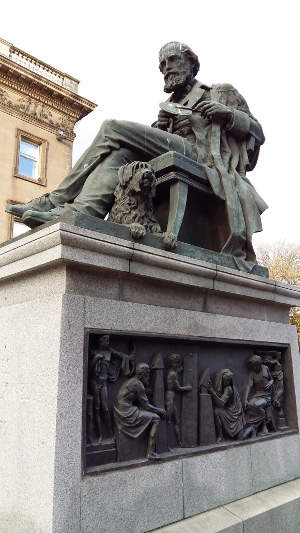
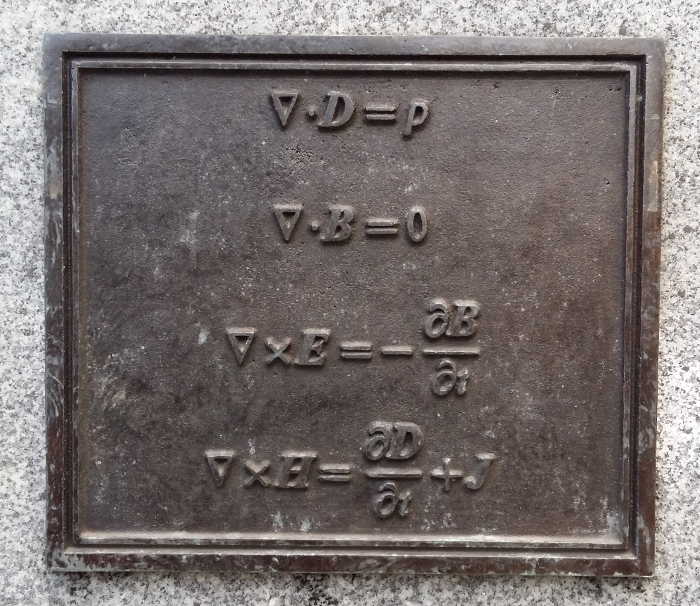
Hermann Weyl
You said that your interest in representation theory came after Harish-Chandra died. You also met Hermann Weyl at IAS and admired his works, of which finite-dimensional representations forms a major part. So… you weren’t really looking at it then?
Atiyah: Let me backtrack a bit about Hermann Weyl. You might like to read the obituary to Hermann Weyl which I wrote.3 You will find it in an unusual place, which is for the U.S. National Academy of Sciences. It was written fifty years after he died. Usually the obituary is written shortly after you die. The U.S. Academy finally tried to get people to write, but everybody who knew him had died by then. So fifty years after they elected me, they wrote to me and asked “Would you like to write the obituary?” I said fine and I wrote his obituary fifty years after he died. Usually if somebody dies, we say “If we look over the next fifty years, we will find out what influence he had.” I was able to say “Look backwards.” So I wrote it retrospectively and I think you will like it.
It is a nice and short article. It shows the influence he had on all subjects of mathematics. He died in 1955. Until my time, everything I did I always found that Hermann Weyl was the guy who did it first. He was always there first. He was the kind of man who set the tone for the development of mathematics in the subsequent fifty years. And Harish-Chandra grew up in that period. That is one influence.
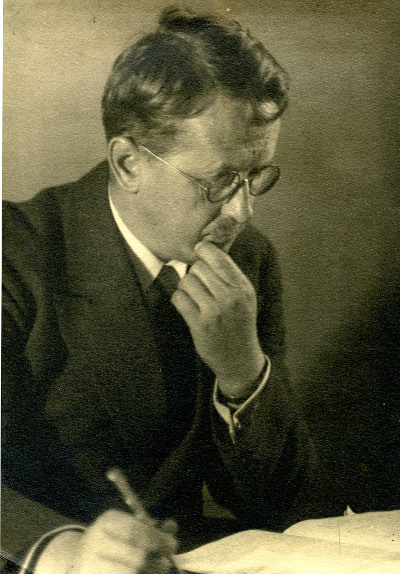
The second influence was of course, in some sense, you could say that what Harish-Chandra was doing was extending Hermann Weyl’s work into quantum mechanics because his work was on infinite dimensions. The first people who worked on this theory were people like Eugene Wigner and Valentine Bargmann and then subsequently Russian schools like that of Israel Gelfand. They were consciously developing infinite-dimensional representations for the purpose of understanding quantum theory. And they bothered themselves to what extent they could use Hermann Weyl’s work on compact groups but now extending them to non-compact groups. So, Harish-Chandra’s work is naturally a combination of Hermann Weyl’s work plus the influence of the people in physics at the Princeton school, and then the Russian School. He built his work by combination of these two ideas. He also had to do a lot of analysis and he based a lot of that on the work of Laurent Schwarz—Schwarz distributions. That was kind of the analytical basis. So all these were new at the time and he was using them. He was a very technical expert who was able to prove theorems. But he was a bit of a machine—he turned out papers exactly thirty-three pages long.
Yeah, exactly thirty-three pages! [Laughs]
Atiyah: He would say “I assume you have read all of my six previous papers,” and carried on. Which meant that only the very very devoted followers would read it. And so his papers had these drawbacks. He was very very mechanical, he was very thorough, very detailed, coming up with very good results. He had a big influence on people using bits of it. But I think it was too formal a way to do it. I myself recently got interested in this and worked with Wilfried Schmid. He was at Harvard, and we re-did some of Harish-Chandra’s work and I have recently come to understand the physics better. So I think Harish-Chandra’s work will be re-done from a modern point of view.
Do you mean to say that doing mathematics is more intuitive, but when one writes papers, that’s not exactly the way one should present it?
Atiyah: Well, you shouldn’t do it. The old days they did write like that. Then it became more formalized. If you go back and read mathematics written over a hundred and twenty years ago it was not so formalized. People gave you their ideas and then they give you some details. But in more modern periods, this was not very formally correct. But they’re wrong—it was correct at the time. I think the fundamental insights of mathematics are by intuition and insight, and with examples making sure you are right. The details on proof—they are a function of time. As years went by, the nature of proofs changed, they evolved to become more formalized. Too much so. Now it is a bit too formalized. That was part of the influence of Bourbaki.
Exactly! I was going to come to that. I remember reading somewhere that Harish-Chandra was considered for the Fields Medal in 1958 but a forceful member in the committee thought that Harish-Chandra’s style was Bourbaki. I think it was Rene Thom who got the Fields Medal that year, in 1958.
If you go back and read mathematics written over a hundred and twenty years ago it was not so formalized
Atiyah: In Edinburgh. I was here at the time. Hodge presided over that Congress. I was young and had to help people move rooms and that sort of thing. Now the story about Bourbaki is that Bourbaki was sort of made up of a reforming group of French mathematicians in the post First World War period. They were trying to restructure French mathematics. They started around… well, structures. They wanted to emphasize the importance of structure. All the words we use today—like isomorphism—come from Bourbaki. But at the end of the day, the abstract notions and ideas, they were the good parts. The bad parts were that they then wanted to make proofs, because the previous era had been full of the Italian algebraic geometers who had no foundations. Bourbaki wanted to have very rigorous foundations. In this direction, they went too far. So they were a good influence and a bad influence. They worked together because the original guys who founded Bourbaki, they knew what they were doing, and they could do both together. The next generation, who weren’t the founders, they only inherited the formal part. So they went off in a totally wrong direction.
The tragedy of mathematics with Bourbaki was that they were very successful in their fundamentals but they were over-enthusiastic, or their supporters were over-enthusiastic, and that led to the bad reputation of Bourbaki. And so, in that sense, Harish-Chandra was not formally a member of Bourbaki, but he grew up under the influence of Bourbaki and the rigorous style of writing. And so, I’m sure his work will be taken apart and redone in a totally different way with an emphasis on ideas.
I’m now trying to understand things. I think I’m understanding a lot of things [now] that I didn’t understand when I was younger. I understood partially [then]. You know, understanding is a slow process. You evolve. As you get nearer and nearer to dying, you understand the world better and better. And finally when you get out there you go “Ah! It’s all obvious.” [Laughs]
So would you say that earlier, mathematics was in some sense driven by application and in the 20th century, mathematics developed for its own sake and not necessarily for its application?
Atiyah: That was always like that, for its own sake. When the Greeks did mathematics, it was always done for its own sake.
But perhaps the sophistication became more pronounced in 20th century, in some sense.
Atiyah: Well, up and down. In the medieval period, people did it for the glory of God. You built cathedrals for the glory of God. You built mathematical theorems for the glory of God. Whatever you call it, you do it for its own sake. You weren’t building cathedrals as houses for the people. Somebody else built houses for the people. You built cathedrals. Mathematicians basically build cathedrals. Cathedrals are big works of intellectual architecture with theories. And they were built because they were beautiful, because you like beauty. Beauty was motivating. You try to build a building without an idea of beauty, you will build a concrete tower. It may be very good for standing a fort or a castle but it is not inspiring.
The Greeks—Euclid, Pythagoras—did it for its own sake. The Arab world did it for the glory of Mohammad. The Indians and Chinese all did it for its own sake in their own language. They would refer to their own gods or their culture or their beauty.
Bertrand Russell made a very provocative remark about Pythagoras. Bertrand Russell was, interestingly enough, the only mathematician to get the Nobel Prize for literature. He said that Pythagoras was the most important person who ever lived. Why? Because he made two fundamental discoveries. One was that numbers were at the heart of music—the tonal scales.
You strive to truth but beauty is your guide. Beauty is the torch that lights the path
The mathematical basis of musical verses were known before that but Pythagoras was the first person who realized the special significance that numbers have. Secondly, he realized the real of importance of Pythagoras Theorem. Everybody knew Pythagoras’ theorem well before Pythagoras but what Pythagoras emphasized was that you could have Pythagorean right-angled triangles with rational sides. So the two most important things in the world—music, a part of our culture and geometry, a part of our agriculture and the utilitarian world—both of these things depend on numbers. So this means that the world is rational because it is built on numbers. We don’t need to have mysterious gods, we don’t need to pray to the gods for it to rain. We can appeal to rationality. That was the beginning of modern science. In other words, what Pythagoras said, according to Russell, was that there are laws of nature. It is our job to find out the laws of nature. That’s what scientists do. The laws of nature—well, we don’t know who created them. But we believe there are laws of nature. And that’s a faith. But then you can work in this field but still be motivated by the beauty of nature. And that is what all of them believed—they believed they worked to enhance the glory of God. The beauty was the driving force; it always has been.
So mathematics has always been developed two ways. First, not for utilitarian purposes but for beauty. Secondly, for utilitarian purposes because you had to do engineering. So it was always these two strands. And Pythagoras realized that. Individual mathematicians are motivated by the beauty of mathematics, but they also have to make sure that the foundations were correct. If a bridge is collapsed, you build a new bridge. So you have to balance between beautiful theory and a theory that works. But a theory that has no beauty will never work.
That’s a beautiful quote!
Atiyah: Hermann Weyl has a beautiful quotation that I like to use a lot. He said “All my life, I pursued two objectives: truth and beauty. But, when in doubt, I have always chosen beauty.” I like this quotation because if you are a mathematician, you think surely truth is more important. But Weyl’s dictum can be explained in the following way. Beauty is something you see here. I see something, say, that tree is beautiful. You can’t deny me my view because I feel it here, emotionally. If I say something is true, that is, I apply my logical reasoning, I’m never quite sure I’m right because the nature of proof changes with time. What is accepted now, what you may have, is a perception of truth. Truth is something you never reach. Truth is the ultimate God. You strive to truth but beauty is your guide. Beauty is the torch that lights the path. So you have both truth and beauty but truth you never reach. Beauty you have here, now. So if you are in doubt, you see a mountain, and you ask “Should I go this way or that way?” Beauty would tell me to go that way. And usually, it is a correct guess. But you’ve got a choice to make. Do you choose the formalistic engineering approach or do you choose the beautiful approach? And most of the time our heart says “beautiful” and the heart will be right. So it’s a very subtle thing. Hermann Weyl said it very explicitly several times and I believe in that strongly.
I personally admire Hermann Weyl because he defined what a manifold is as we know today.
Atiyah: Of course, the idea was around that time. But he was the first person to formally define it.
Because even Élie Cartan himself says at one point that it is difficult to define what a manifold is.
Atiyah: Hermann Weyl was a master of ideas. I’m an enormous admirer. Interestingly enough, when I wrote that obituary, I said I am going to focus on the influence he had but I never focussed on the parts of mathematics that I don’t understand. The two parts I said nothing about were his very great concern with the foundational questions of mathematics—big arguments with Hilbert and Gödel, which he was very much involved with. I never paid much attention to logical foundations so it’s not for me. And the other thing that I said I wouldn’t do anything about was this: he had some very interesting questions in bits of number theory that I didn’t know much about. I mean, I did know some number theory but he obviously went into much greater depth, such as with Diophantine approximations. In the last ten years, I got interested in both these things of Hermann Weyl. I realized what he was trying to do about the logical foundations of mathematics and in number theory. I can write now another interesting addition to that obituary. That would be another excuse for bringing it up to date. I always thought I would follow in Hermann Weyl’s footsteps and I was following them only in the areas I knew, but now I’m following them in the areas I didn’t know. And I’m still following Hermann Weyl. He is my spiritual beacon. And I’m still trying slowly to catch up with him. My only regret is that I didn’t meet him. He was sixty years ahead.
I’m still following Hermann Weyl. He is my spiritual beacon
But I heard him talk at the Amsterdam Congress [ICM]. He was the president of the Fields Medal committee that year and he had to give big speeches about the Fields Medallists. The two Fields Medallists at the time were people I knew very well—Jean-Pierre Serre and Kunihiko Kodaira. They were different characters although for a while their interests overlapped. And Hermann Weyl’s talk was a very magnificent speech. First he talked about Kodaira because Kodaira was working in the things that Hermann Weyl studied at great length—differential equations, tensor harmonic forms. Weyl bought him [Kodaira] from Japan where he was working alone. He [Kodaira] was his [Weyl’s] protégé. Serre he didn’t know. He poetically concluded his speech with the following remarks:
Here ends my report. If I omitted essential parts or misrepresented others, I ask for your pardon, Dr. Serre and Dr. Kodaira; it is not easy for an older man to follow your striding paces. Dear Kodaira: Your work has more than one connection with what I tried to do in my younger years; but you reached heights of which I never dreamt. Since you came to Princeton in 1949 it has been one of the greatest joys of my life to watch your mathematical development. I have no such close personal relation to you, Dr. Serre, and your research; but let me say this that never before have I witnessed such a brilliant ascension of a star in the mathematical sky as yours. The mathematical community is proud of the work you both have done. It shows that the old gnarled tree of mathematics is still full of sap and life. Carry on as you began!
He wrote this book about the classical groups.4 It is a marvellous book written in response to an attack. In the old days, people did invariant theories and when Hermann Weyl wrote this book, people said “Oh, a Hermann Weyl book. He says all this formal nonsense. He doesn’t understand any invariant theory. We old guys, we do invariant theory.” Hermann Weyl was so cross. He did understand invariant theory much better than anybody else. So he wrote this book as a response just to show that he did understand it. And he wrote a beautiful book; it’s a book you read many many times. There are so many things that it isn’t a single-track book. As opposed to the book written around the same time by Claude Chevalley on Lie groups. Single track—you follow the axioms and you end. By the time you finish, you know all of it and you throw book and never look at it again. Hermann Weyl’s book was the contrary—you read it, and you re-read it. Every time you get some new insights. I’ve done that myself. So it’s a fantastic book.
That’s very interesting, what you said. Again it brings me back to Harish-Chandra. I think he was quite influenced by Chevalley in Columbia. He heard his lectures and there is this wonderful recollection by Mostow. Apparently, Chevalley’s lectures were very planned, very well laid out and everything. And at one place, Chevalley kind of stopped and sort of went to a corner of the board, wrote something and covering that part of the board…
Atiyah: Yeah, I’ve heard that story too. He drew a picture.
[Laughs] And then he said “My assertion is certainly correct, but I don’t see at the moment how to prove it.” Apparently, Harish-Chandra later remarked to Mostow: “How can one know a mathematical statement is true without knowing how to prove it?”
Atiyah: Both of them were true. I think the point is that Chevalley, when he wrote books about algebraic geometry, people said to him—this is another story—“When you think of an algebraic curve, what do you think about?” He wrote in the corner “f(x,y) = 0”. [Laughs] Then he rubbed it out you see. To hide the fact that… I mean, these stories were all aspects of the truth. I think Harish-Chandra is more like Chevalley than Hermann Weyl by a long shot. He was more fastidious about proofs but Chevalley probably had the proofs—maybe he wrote a bit too fast. Chevalley was a bit older.
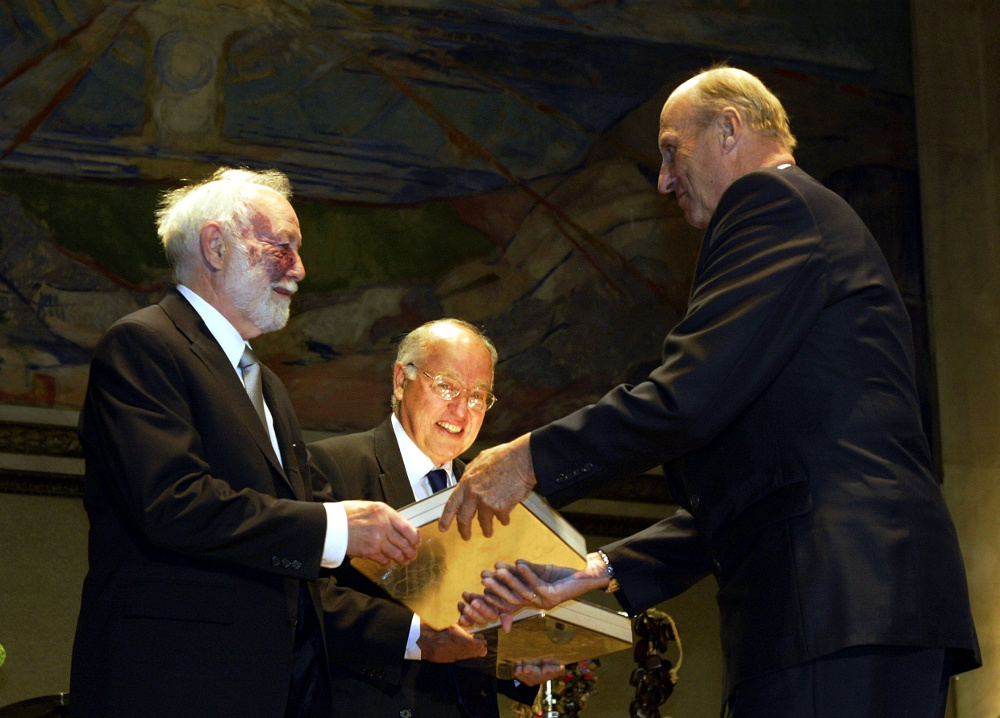
Approaches to Mathematical Truth
How is a physicist’s approach to mathematical truth different from that of a pure mathematician?
Atiyah: That’s a very interesting question. I can’t answer it in two sentences because my ideas are quite subtle on that. I’ll give you a quick summary. First of all, there is no one class of physicists. Physicists are a big spectrum—appropriate terminology [laughs]. So one end you get physicists who are only interested in having some kind of a crude model which will fit with experiment up to the accuracy they’re concerned with. They are not like engineers, but they’re like an engineer with some understanding. They understand the mathematics… well, some of them bother. Some are just engineers who want a formula which works. Some will say that the formalism or the mapping breaks down and I don’t know what to do. An engineer whom the formula comes from will give it to a physicist who is a little bit of a mathematician who understands it. But then it keeps shifting. So you move further along this line, and eventually, you will end up at the far end with the physicist who says “I want to understand everything. All of it. I want to understand gravitation, electromagnetism. I want a theory that is completely universally perfect.” They’re at the extreme wing. By the time you get to the extreme wing, you have outflanked the mathematicians. The mathematicians are somewhere in the middle.
Now, “everything” means physics at all scales—big, small, classical, quantum. I think mathematicians are in between with a shorter range. They are influenced by applied mathematics and engineering. They know they have to find technical tools, so they have something in common with engineers. The engineers and the applied mathematicians are much the same. Then the mathematicians develop mathematics but more for the sake of following the beauty. So mathematics is much more diverse and it also has many more applications. Physicists are focussed on well, they call it the theory of everything, but they’re really meaning fundamental physics. The mathematicians are more diverse and there are more schools of thought. Then, as you go further up, mathematicians are interested in more advanced physics, quantum theory and so on. They have to follow the physicists, keeping track with the physicists. Their mathematical models have to fit the physical theory upto some point. But then the question is how far on the scale do you want the physical theory to work. I think in this way you get towards the extreme end of the realm of the mathematicians who are logicians, the fundamentalists like Gödel, Turing and Hermann Weyl, all who are concerned with the logical foundations of mathematics. The questions they are asking seem to be demanding answers of a fundamental nature that in the real world doesn’t arise. The physicists are interested in the foundations in their own language. They don’t really want to worry about the logical foundations like the mathematicians. They want to worry about the formal mathematical foundations for their own purposes. So they are kind of weaker fundamentalists; they are fundamentalists of a different kind still. They are really separated from the logicians. There are few people trying to cross the border; but very few of them. You can differentiate different physicists based on the scale they operate: Are you only concerned with the nucleus and the atom? Are you interested in molecules? Are you interested in galaxies? Are you concerned with the universe? What happened before the Big Bang? You can keep increasing the scale, and you get into deeper and deeper waters. Mathematicians down here are also struggling.
There are some people trying to bridge the gap—Gödel was interested in physics; and you’ve heard of Conway—but they are rather scarce in number. No division is clear cut but broadly speaking I see a tree which starts with engineering and goes along with physics and mathematics in parallel, with a few ups and downs, but later on going off into… like a river delta valley. It’s rather strong… a big mainstream here and there, with a few rivers in between. That’s not a bad analogy. I am somewhere… I think I climbed a little hill and am looking down on this lot trying to get a good view. If you are too high up, you can only see a single line. If you are too low down, you see too much detail. You’ve got to be just right. And probably best if you are in a balloon going up and down. So you change your view depending on your perspective. If you are higher up, you see different scales. If you want to see a mouse, you come down closer to the earth.
Could one describe this as two sides of a coin? For example, in mathematics, the two sides can be algebra and analysis.
Atiyah: I don’t think I accept your distinction. My distinction would be algebra and geometry. Analysis is more across the border. In analysis, you worry about the continuum in geometry. Analysis in algebra is when you go, for example, from polynomials to analytic functions. Analysis is a bridge that connects algebra and geometry. And algebra has old traditions in India and so on, and geometry has an old tradition with Pythagoras and the Greeks. Analysis is common ground. And of course, the physicists grow out of this. Algebra and geometry connected by analysis is a good bridge. Then you follow that through to physics. Algebra leads to some formal computation, geometry leads to insights—Dirac lives here and [Abdus] Salam lives there. Of course, which is up and which is down is… [laughs] I would put them on a plane so that we are not distinguishing.
Algebra leads to analysis immediately once you start, for example, to consider infinitely many things. Finite algebra is finite. Finite geometry is very finite. But things only get interesting when you allow infinite things. Infinite series, decimal approximations of numbers, continuum limits, differential calculus—how do you define the derivative? As soon as it becomes infinite—and of course, it can be infinite in different degrees—how big is your infinity? And in this whole scale, how big is infinity? What is infinity? There is more than one infinity. You can write twenty five books about infinity [laughs]. But that is a story for another time.
Algebra leads to some formal computation, geometry leads to insights
It has been a great honour and a pleasure talking to you.
Atiyah: I always like talking. It is one of my weaknesses.
It was really delightful.
Footnotes
- Collected Papers of V.K. Patodi. Eds. M.F. Atiyah and M.S. Narasimhan. 1996. World Scientific. isbn 9810226594. ↩
- M. Atiyah. Raoul Harry Bott, FRS, 1923–2005. Bull. Lon. Math. Soc.. 2010. 42(1): 170–180. doi 10.1112/blms/bdp083. ↩
- M.Atiyah. Hermann Weyl. Chapter 18, Biographical Memoirs, National Academy of Sciences. 2003. 82:320–335. doi 10.17226/10683. ↩
- H. Weyl. The Classical Groups: Their Invariants and Representations. Princeton University Press. 1997. isbn 9780691057569; Indian edition published by Hindustan Book Agency: 2013. isbn 9789380250359. ↩
